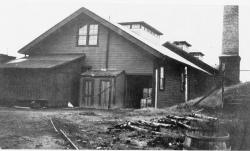
The city of Shreveport could not justify the cost of building a water distribution system solely for the purpose of supplying potable water. It was a series of disastrous fires in the 1880s that galvanized support for a pumping facility that would provide ample water for firefighting.
The McNeill Street Pumping Station is a self-contained lesson in the history of municipal water system development. From high-volume pumping technology to water filtering and disinfection, the station helped introduce or refine key technologies that were central to the evolution of America's urban water distribution infrastructure. Operating continuously for more than a century, the station became as well known for preserving the old as promoting the new. Its turn-of-the-century steam-powered pumps remained in operation until 1980, having been lovingly maintained 50 years beyond their normal life expectancy. Today, the old station building is a museum where the vintage equipment is displayed in operating configuration - a testament to the skill of early water system engineers, manufacturers, and maintenance crews.
Facts
- The McNeil Street station ceased operations in 1994, 107 years after it was built. Shreveport kept the gas-fueled facility operating long after other steam plants had converted to electricity in order to avoid relying on a single fuel source in the event of a calamity. No longer operating but still intact, McNeil Street is believed to be the last remaining steam-powered facility of its kind in the country.
- The direct-acting steam pumps used at the station were developed by Henry R. Worthington, whose invention one biographer called "one of the most ingenious advances in engineering in the 19th century." In 1900, the 1,160 Worthington installations in the U.S. were capable of pumping 2.9 billion gallons of water a day.
- McNeil Street was at the forefront of the development of key water treatment technologies including rapid sand pressure filtration, reinforced concrete construction of water treatment filters, and three successive methods of water disinfection: sodium hypochlorite, liquid chlorine, and ozone.
- In the 19th century, most municipal waterworks were privately owned. McNeil Street made the transition to public ownership in 1917, anticipating the national trend.
- The city of Shreveport could not justify the cost of building a water distribution system solely for the purpose of supplying potable water. It was a series of disastrous fires in the 1880s that galvanized support for a pumping facility that would provide ample water for firefighting.
- The station building itself is a well-preserved example of 19th century industrial architecture with six-foot deep brick foundations, wood and metal truss pitched roofs, hand-hewn and bolted roof rafters and supports, cast iron window frames, and brick archways and pilasters.
- The McNeil Street Pumping Station has been named a National Historic Landmark by the National Park Service and an Historic American Water Landmark by the American Waterworks Association.


